Conveyor type dishwasher
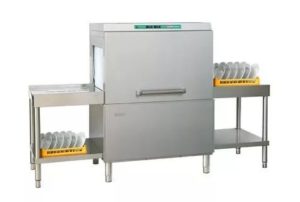 Professional dishwashers are simply irreplaceable in large catering establishments. There are several types of machines in this class, one of them is the conveyor dishwasher. What are its features, advantages and disadvantages - this will be discussed.
Professional dishwashers are simply irreplaceable in large catering establishments. There are several types of machines in this class, one of them is the conveyor dishwasher. What are its features, advantages and disadvantages - this will be discussed.
Features of machines of this type
A conveyor-type dishwasher differs from other types of machines by continuously washing dishes. This allows you to wash a larger number of items in a short period of time. The essence of how a dishwasher works is that plates are placed on a conveyor belt, which pulls them through several compartments: washing, rinsing, and sometimes drying.
At the washing stage, the main task is to wash off the dirt as much as possible with water that heats up to 50-60 degrees. In this case, water is supplied under a strong stream from special nozzles, which are located on different sides. In modern models of dishwashers, the nozzles are located in the direction of movement of the trays with dishes, which increases the time of their interaction with water. At the rinsing stage, the dishes are doused under pressure with water heated to a temperature of 80-90 degrees, which allows you to kill up to 90% of germs and bacteria.
Important! Plates and cutlery washed in such hot water fully meet sanitary requirements, unlike those washed by hand.
When rinsing, special means are used, thanks to which kitchen utensils dry faster and do not leave drips and stains on them. This stage of dishwashing can consist of one, two or three cycles. The simplest option involves rinsing with very hot water once.There is also a double rinse, in which the detergent is first washed off with water without impurities, and then with water with rinse aid. Triple rinsing involves rinsing with hot water, then cold water, then hot water again.
In some cases, a conveyor-type dishwasher is equipped with an auxiliary section in which pre-rinsing occurs. In advanced models of these machines, steam condensers are installed, which are capable of capturing water vapor that appears during washing.
What are they, their pros and cons
By design, conveyor dishwashers can be divided into the following groups:
- tape;
- cassette.
 In belt plates, the plates are placed directly on a moving belt with “fingers”. This requires two people, the first of whom places the plates at the entrance, the other collects them at the exit. In cassette dishwashers, items that need to be washed are first placed in special trays (cassettes), and then these trays are placed in the dishwasher. All dishwashers have special trays for forks, spoons, knives and other things.
In belt plates, the plates are placed directly on a moving belt with “fingers”. This requires two people, the first of whom places the plates at the entrance, the other collects them at the exit. In cassette dishwashers, items that need to be washed are first placed in special trays (cassettes), and then these trays are placed in the dishwasher. All dishwashers have special trays for forks, spoons, knives and other things.
Belt dishwashers can be installed in student and school canteens, in children's camps and sanatoriums, which require a huge amount of dishes of the same size and shape. Such machines have a straight shape and take up a lot of space.
Cassette machines are more compact and can have an angular shape. This allows one person to service such a machine, which makes its operation convenient. The disadvantage of cassette dishwashers is obvious, because the cassettes themselves prevent the penetration of the mixture of detergent and water, reducing the intensity of washing. Their second disadvantage is that cassettes are consumables. They wear out quite quickly and need to be replaced.
For your information! A conveyor dishwasher with cassettes is used in restaurants and special canteens, where there is a greater variety of dishes, both in size and shape.
Conveyor dishwashers with high dishwashing performance have high energy and water consumption. They are designed for a network with a rated voltage of at least 380 V, and therefore can only be connected in specially equipped rooms.
Review
Let's look at several machines of this type, comparing them by characteristics and price.
- Silanos T1500 DE is a cassette-type machine that washes 83 cassettes of dishes in an hour, which is approximately 1494 plates. The set includes a cassette for 18 plates, a cassette for glasses and another for cutlery. The cassette size is 50x50 cm. The machine is completely made of steel and has electromechanical control. Power consumption is about 15, 25 kW. The cost of this equipment is about $6,456.
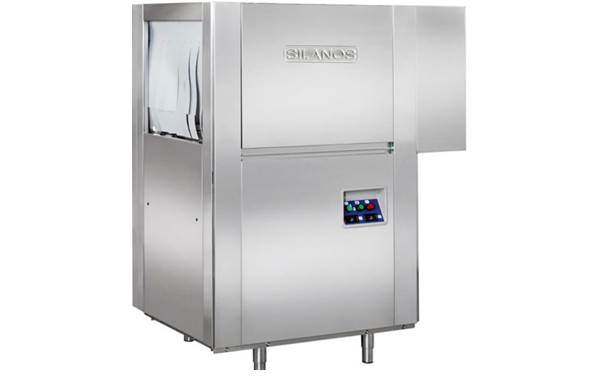
- Elettrobar NIAGARA 2150 DAWY is an Italian cassette-type dishwasher with loading from left to right. Provides two cycles of washing at 55 degrees, rinsing at 80 degrees and drying. Power consumption 28.8 kW, at a voltage of 400 W. It consumes about 200 liters of water per hour of operation. The average cost is $10,860.
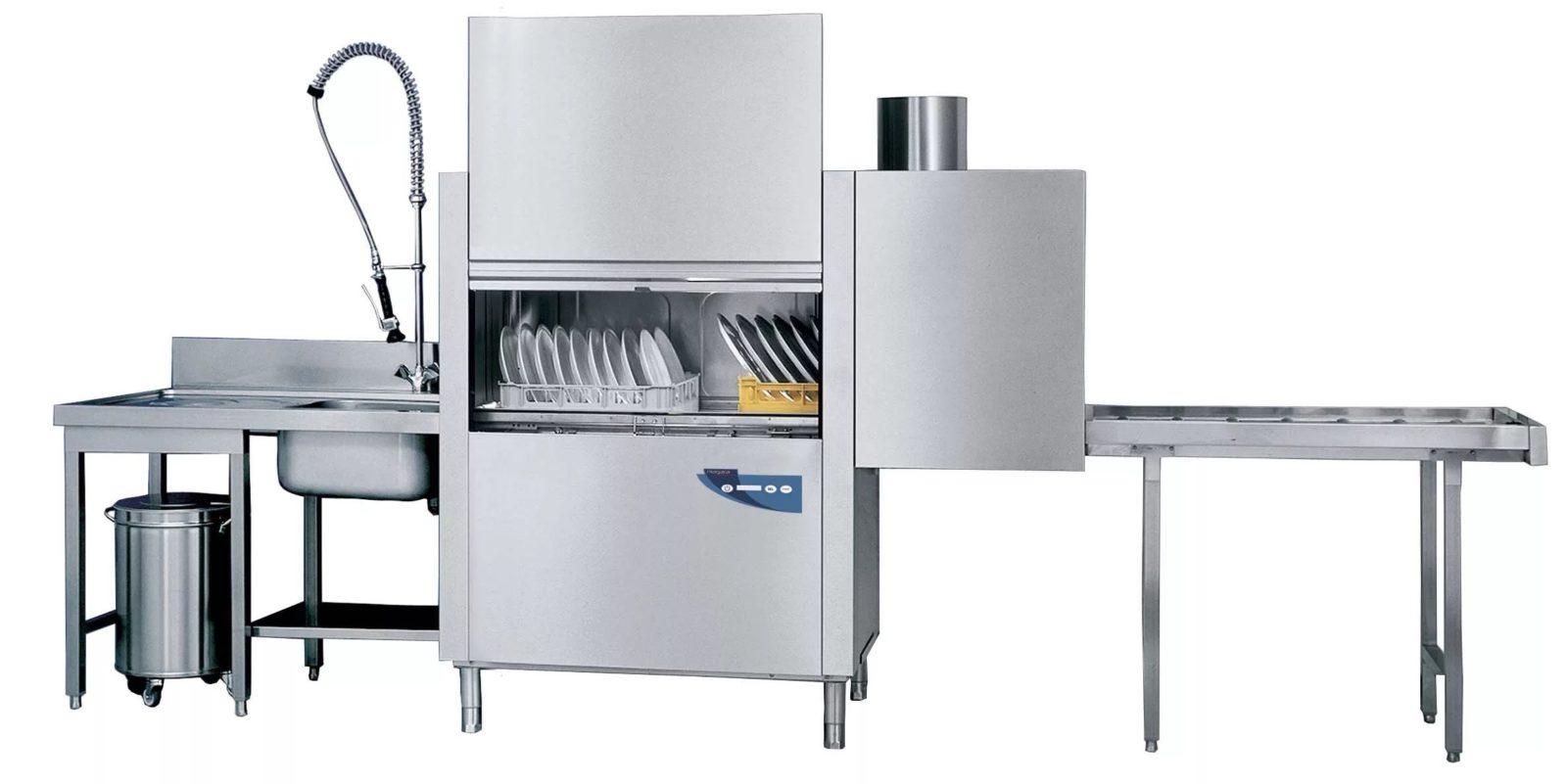
- Grodnotorgmash MMU 1000M is a belt-type dishwasher that supports both cold and hot water supply. You can wash plates, bowls, trays, glasses, which means the machine can be used in public canteens. The machine is divided into three sections, in the first there is cleansing from large dirt, in the second there is washing with a product, in the third there is double rinsing. During the last rinse, the temperature is at least 85 degrees. It should be noted that this machine has easy disassembly and access to parts in case of repair, wall mounting and a radio interference filter.Average price: $7,700.
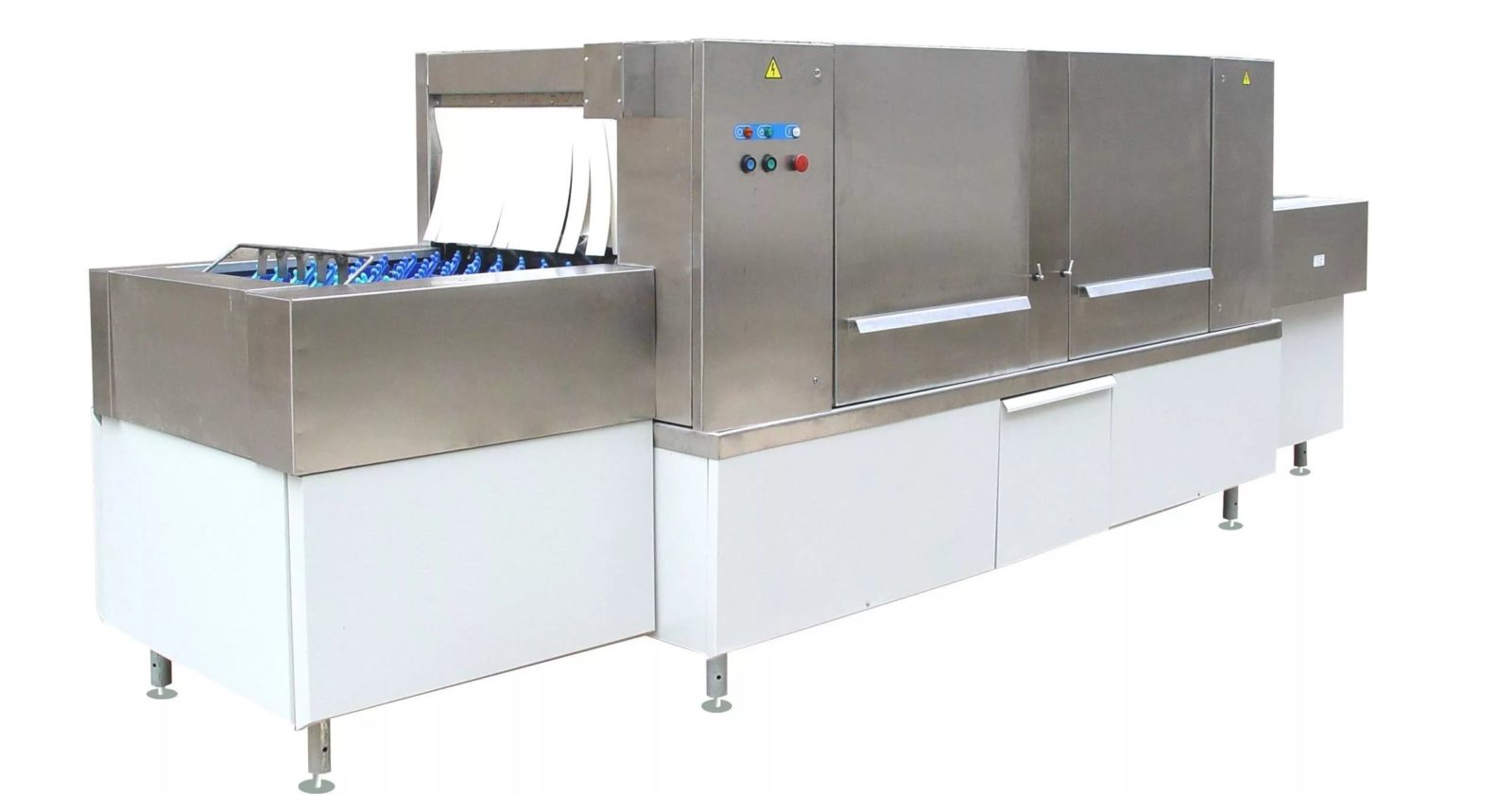
- ELECTROLUX WTM250ELA 534113 – cassette machine from Sweden. This dishwasher has 2 dishwashing cycles with water heating from 55 to 700C. When rinsing, the heating reaches 84 degrees. This technique allows you to wash from 280 to 4500 plates per hour. The machine is connected to a network with a rated voltage of 380 V. Power consumption is 44.2 kW, and water consumption is 300 liters. We can say that the washing machine is not very economical, and it costs about $34,175.
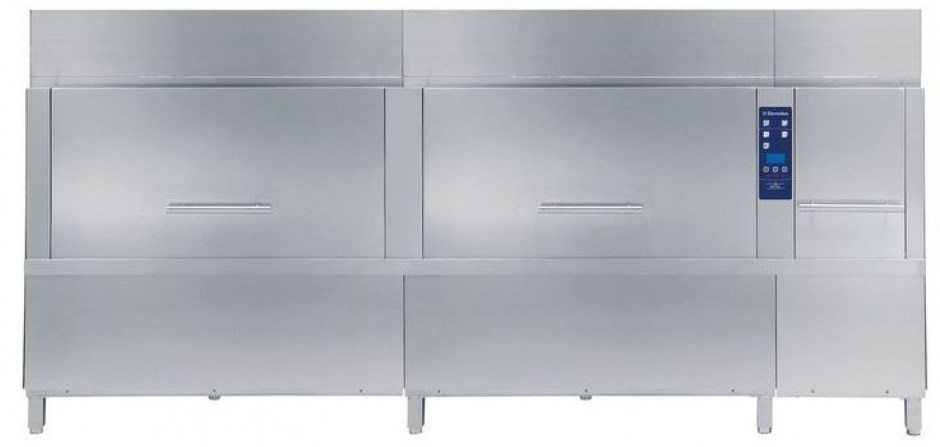
- MACH MST/021 is an Italian conveyor dishwasher made of stainless steel. Dishes are served in cassettes; up to 95 such cassettes can be processed in an hour. Power consumption 29 kW. The machine turns off automatically and is equipped with a pump, guillotine door with a switch. Average price: $15,439.
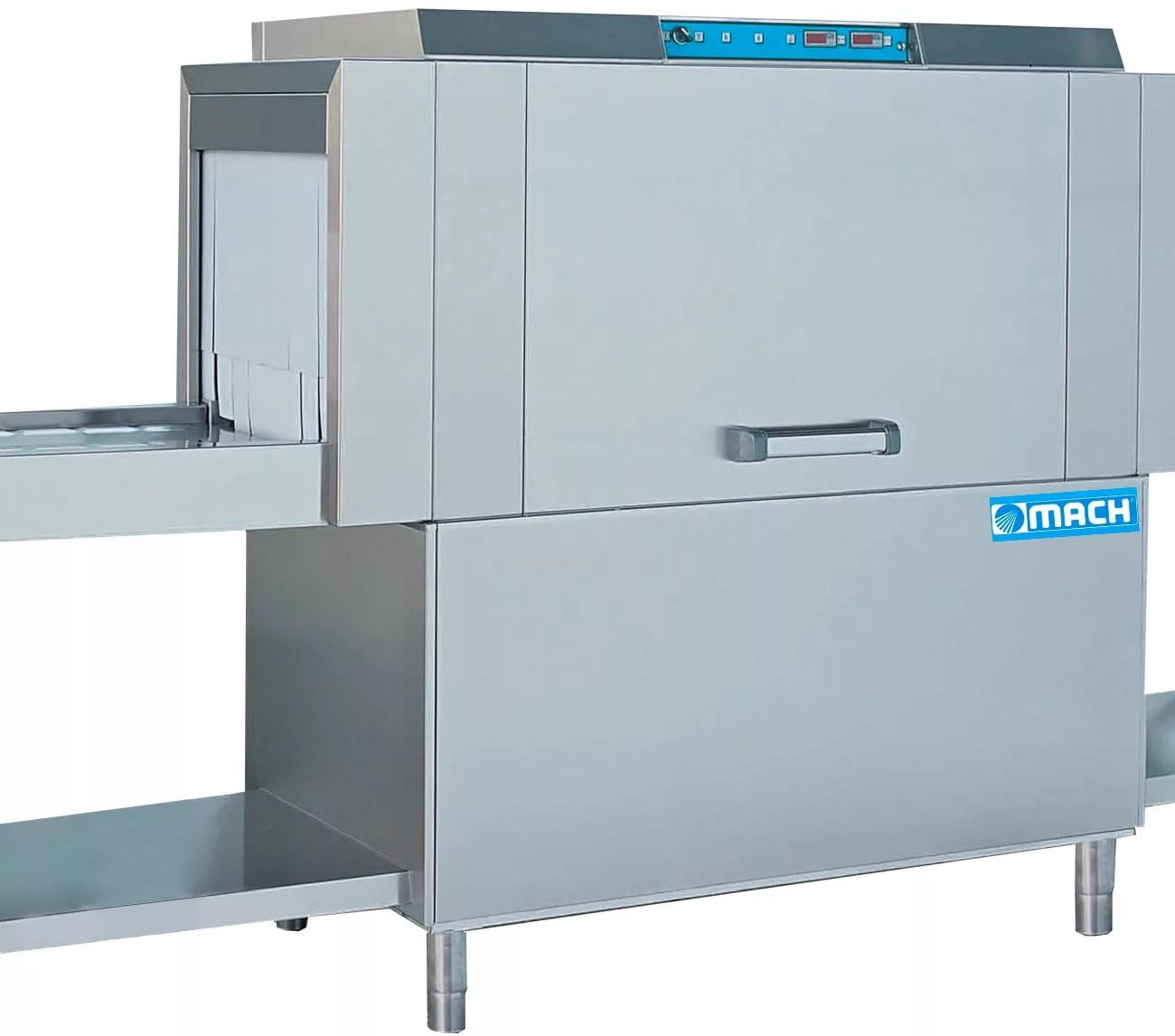
It may well be that a conveyor-type dishwasher is not suitable for your business. At the same time, you cannot decide what to buy. It’s hard to say which technique will meet your expectations, but you can read about what types of dishwashers are there?, perhaps this information will give you the right thoughts.
Interesting:
Reader comments
- Share your opinion - leave a comment





















Add a comment